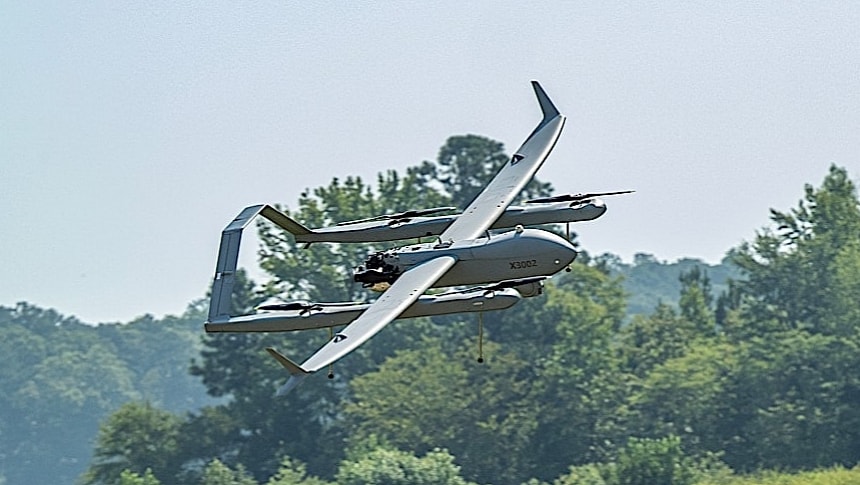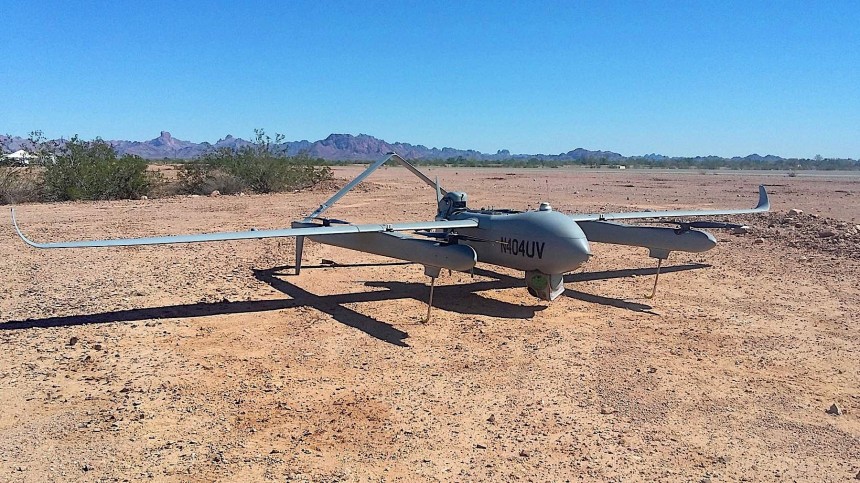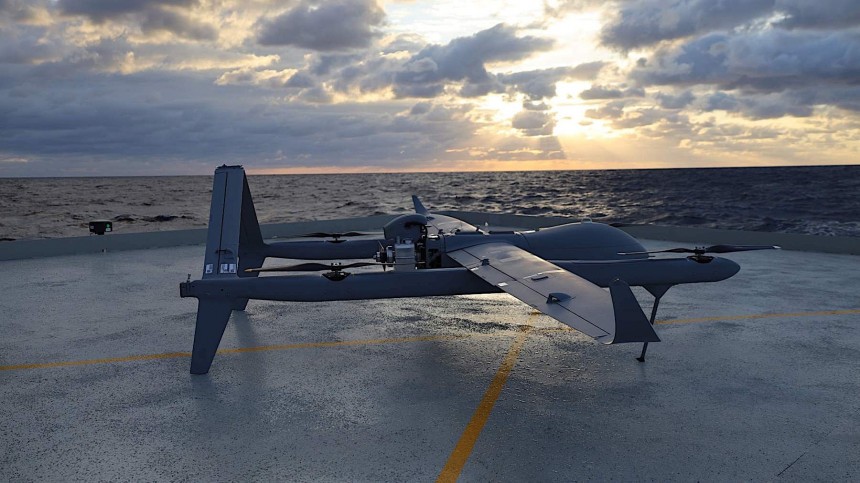As the drone race in the military sector heats up historic adversaries are trying to get an upper edge over their foes by learning from past and present conflicts. Most of them do this behind closed doors and away from prying eyes, but not the U.S. military.
Although America has a number of drone programs that are extremely hush-hush, many of them are not. Well, not to the same extent, at least, but the world is aware of their existence and what the end products are supposed to do.
One such relatively public program is the one called Future Tactical Uncrewed Aircraft System (FTUAS). Born back in 2021, it is supposed to find a replacement drone for the RQ-7B Shadow that's been at it going on intelligence, surveillance, and reconnaissance (ISR) missions ever since 2002 for Brigade Combat Teams (BCTs).
The guidelines for the drones that will result from FTUAS call for the new tech to be just as capable as the existing one, and then some. It should be of taking off and landing vertically (VTOL), thus eliminating the need for runways, and in the best-case scenario should need no catapult to launch and arresting gear to land (the Shadow, for instance, needs a trailer as a launch platform). On top of it all, it should be quieter than anything else before it.
In the time that has passed since announcing the program, the U.S. Army has already narrowed down the list of potential suppliers, and announced in play for the award are big names of the industry, including Griffon Aerospace, Sierra Nevada, Textron, AeroVironment, and Northrop Grumman with Shield AI.
The list was narrowed down even further later at the end of last year, reaching just two competitors, Griffon and Textron.
Technically speaking the new hardware should be ready to be fielded sometime next year, and that means the pace of development for the FTUAS should pick up. And pick up it did, after the Army announced it has selected defense contractor Textron for Options 3 and 4 of the program.
What that means is Textron will have to conduct a demo flight of its proposed FTUAS drone, but also deliver it to the Army for evaluation. And the drone Textron is betting on is the relatively unknown Aerosonde.
Initially made by a drone specialist called Insitu and later by the AAI Corporation, the Textron Aerosonde has already conducted some 650,000 flight hours fleet-wide, and it was even tested in the field by the U.S. Navy.
At the beginning of last year, for instance, the Aerosonde was deployed on the decks of several Navy ships, including USS Hershel "Woody" Williams (ESB 4) and the USS Miguel Keith (ESB 5). It's unclear what happened since then with the technology, but by the looks of it, the military is pleased with the results overall, so much so that the Navy requested Textron to supply them for Navy ships over the next five years.
The Aerosonde is a relatively weird design in the land of drones. There are two versions available, the Aerosonde Fixed Wing, which needs a hydraulic, pneumatic launcher and a recovery net (the opposite of what the Army is looking for), and the Aerosonde Hybrid Quad (HQ), which is the VTOL drone on the ground forces are interested in.
I said the thing is weird, and you only need to look at its design to be aware of that. An apparent twin-boom design, like, say, America's first-ever night fighter aircraft, the Northrop P-61 Black Widow from the Second World War, the Aerosonde will sure be a peculiar sight in the sky.
In the version it will be delivered to the Army, Mk. 4.8 HQ, the drone is clearly much, much smaller than the fighter plane. It comes with a wingspan of 14.45 feet (4.4 meters) and can carry a maximum payload of 39 pounds (17.7 pounds). That payload can come as pretty much everything, from cameras to radars and electronic warfare gear.
The thing runs, like all the others in its family, a Lycoming heavy-fuel engine that can run on a variety of fuels. It can travel for as much as 87 miles (140 km) and can climb to altitudes of 8,000 feet (2,438 meters). In terms of time spent in the air, this kind of Aerosonde can stay airborne for close to 20 hours.
As per Textron, the drone in its Army FTUAS configuration was designed to have an "expeditionary footprint," meaning it should be relatively easy to carry it into battle. It should also "reduce burden on the soldier, while offering best-in-class size, weight and power (SWAP) to execute day and night missions with multi-INT payloads."
Textron did not say exactly when the U.S. Army will begin testing its solution, but it's likely the company give everything it has to land this contract too.
One such relatively public program is the one called Future Tactical Uncrewed Aircraft System (FTUAS). Born back in 2021, it is supposed to find a replacement drone for the RQ-7B Shadow that's been at it going on intelligence, surveillance, and reconnaissance (ISR) missions ever since 2002 for Brigade Combat Teams (BCTs).
The guidelines for the drones that will result from FTUAS call for the new tech to be just as capable as the existing one, and then some. It should be of taking off and landing vertically (VTOL), thus eliminating the need for runways, and in the best-case scenario should need no catapult to launch and arresting gear to land (the Shadow, for instance, needs a trailer as a launch platform). On top of it all, it should be quieter than anything else before it.
In the time that has passed since announcing the program, the U.S. Army has already narrowed down the list of potential suppliers, and announced in play for the award are big names of the industry, including Griffon Aerospace, Sierra Nevada, Textron, AeroVironment, and Northrop Grumman with Shield AI.
The list was narrowed down even further later at the end of last year, reaching just two competitors, Griffon and Textron.
What that means is Textron will have to conduct a demo flight of its proposed FTUAS drone, but also deliver it to the Army for evaluation. And the drone Textron is betting on is the relatively unknown Aerosonde.
Initially made by a drone specialist called Insitu and later by the AAI Corporation, the Textron Aerosonde has already conducted some 650,000 flight hours fleet-wide, and it was even tested in the field by the U.S. Navy.
At the beginning of last year, for instance, the Aerosonde was deployed on the decks of several Navy ships, including USS Hershel "Woody" Williams (ESB 4) and the USS Miguel Keith (ESB 5). It's unclear what happened since then with the technology, but by the looks of it, the military is pleased with the results overall, so much so that the Navy requested Textron to supply them for Navy ships over the next five years.
The Aerosonde is a relatively weird design in the land of drones. There are two versions available, the Aerosonde Fixed Wing, which needs a hydraulic, pneumatic launcher and a recovery net (the opposite of what the Army is looking for), and the Aerosonde Hybrid Quad (HQ), which is the VTOL drone on the ground forces are interested in.
I said the thing is weird, and you only need to look at its design to be aware of that. An apparent twin-boom design, like, say, America's first-ever night fighter aircraft, the Northrop P-61 Black Widow from the Second World War, the Aerosonde will sure be a peculiar sight in the sky.
The thing runs, like all the others in its family, a Lycoming heavy-fuel engine that can run on a variety of fuels. It can travel for as much as 87 miles (140 km) and can climb to altitudes of 8,000 feet (2,438 meters). In terms of time spent in the air, this kind of Aerosonde can stay airborne for close to 20 hours.
As per Textron, the drone in its Army FTUAS configuration was designed to have an "expeditionary footprint," meaning it should be relatively easy to carry it into battle. It should also "reduce burden on the soldier, while offering best-in-class size, weight and power (SWAP) to execute day and night missions with multi-INT payloads."
Textron did not say exactly when the U.S. Army will begin testing its solution, but it's likely the company give everything it has to land this contract too.


















